A gas is expanded form volume V0→2V0 under three different processes as shown in the figure . Process 1 is isobaric process process 2 is isothermal and and process 3 is adiabatic .
Let ΔU1,ΔU2andΔU3 be the change in internal energy of the gs in these three processes then
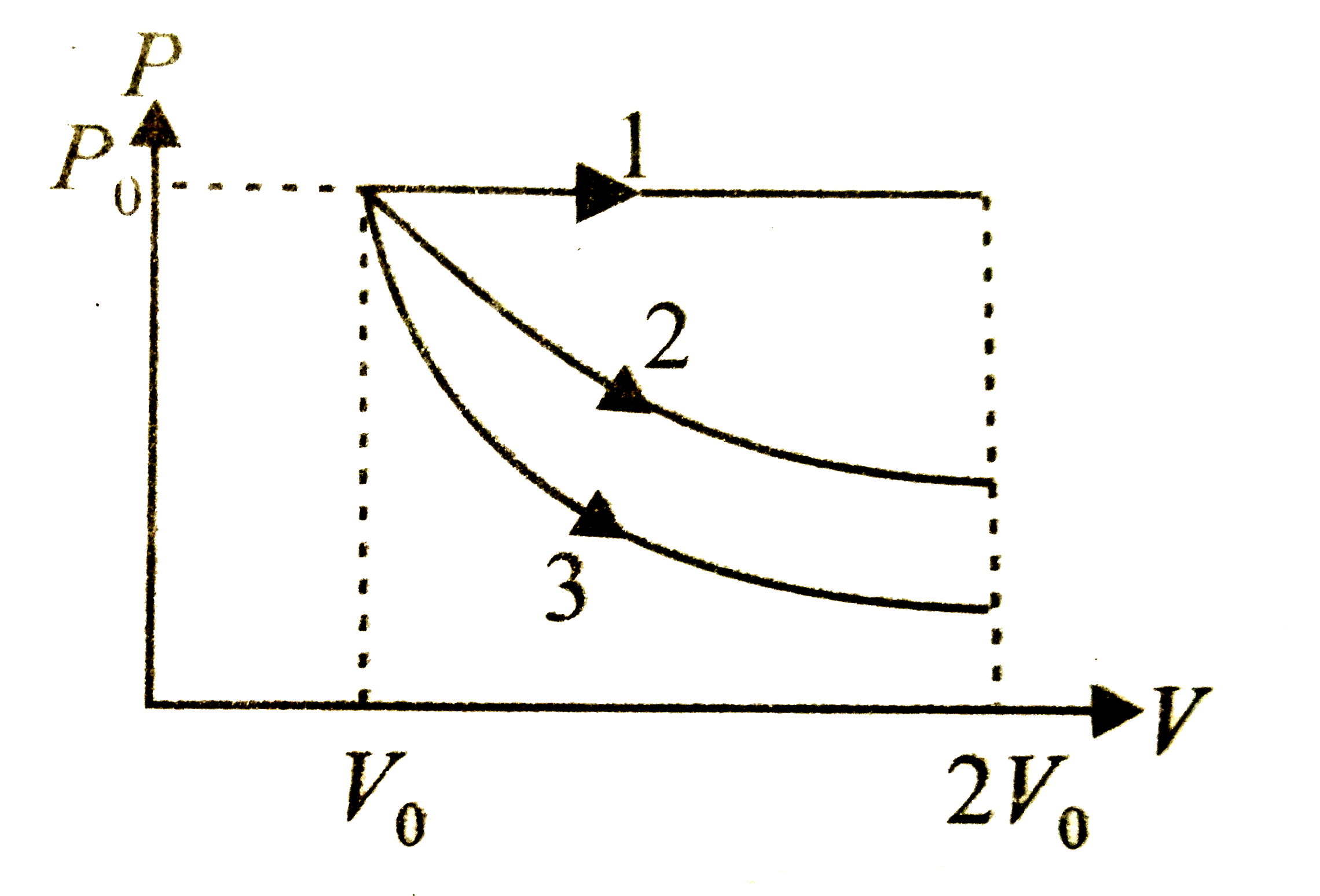
ΔU1>ΔU2>ΔU3
ΔU1<ΔU2<ΔU3
ΔU1<ΔU2<ΔU3
ΔU1<ΔU2<ΔU3
The correct Answer is:A
Process 1 is isobaric expansion (P=constant)Hence temperature of gas will increase.
ΔU1 =positive
process 2 is an adiabatic expansion
Gence temperature of gas will fall
ΔU3=negative
ΔU1>ΔU2>ΔU3
Topper's Solved these Questions
- THERMODYNAMICSBOOK - NCERT FINGERTIPSCHAPTER - THERMODYNAMICSEXERCISE - Heat Engines
4 Videos
- THERMODYNAMICSBOOK - NCERT FINGERTIPSCHAPTER - THERMODYNAMICSEXERCISE - Refrigerators And Heat Pumps
10 Videos
- THERMODYNAMICSBOOK - NCERT FINGERTIPSCHAPTER - THERMODYNAMICSEXERCISE - Thermodynamic State Variables
2 Videos
- THERMAL PROPERTIES OF MATTERBOOK - NCERT FINGERTIPSCHAPTER - THERMAL PROPERTIES OF MATTEREXERCISE - Assertion And Reason
10 Videos
- UNITS AND MEASUREMENTSBOOK - NCERT FINGERTIPSCHAPTER - UNITS AND MEASUREMENTSEXERCISE - Assertion And Reason
15 Videos
Similar Questions
Change in internal energy in an isothermal process for ideal gas is
View SolutionAn ideal gas goes from State A to state B via three different process as indicate in the P−V diagram.
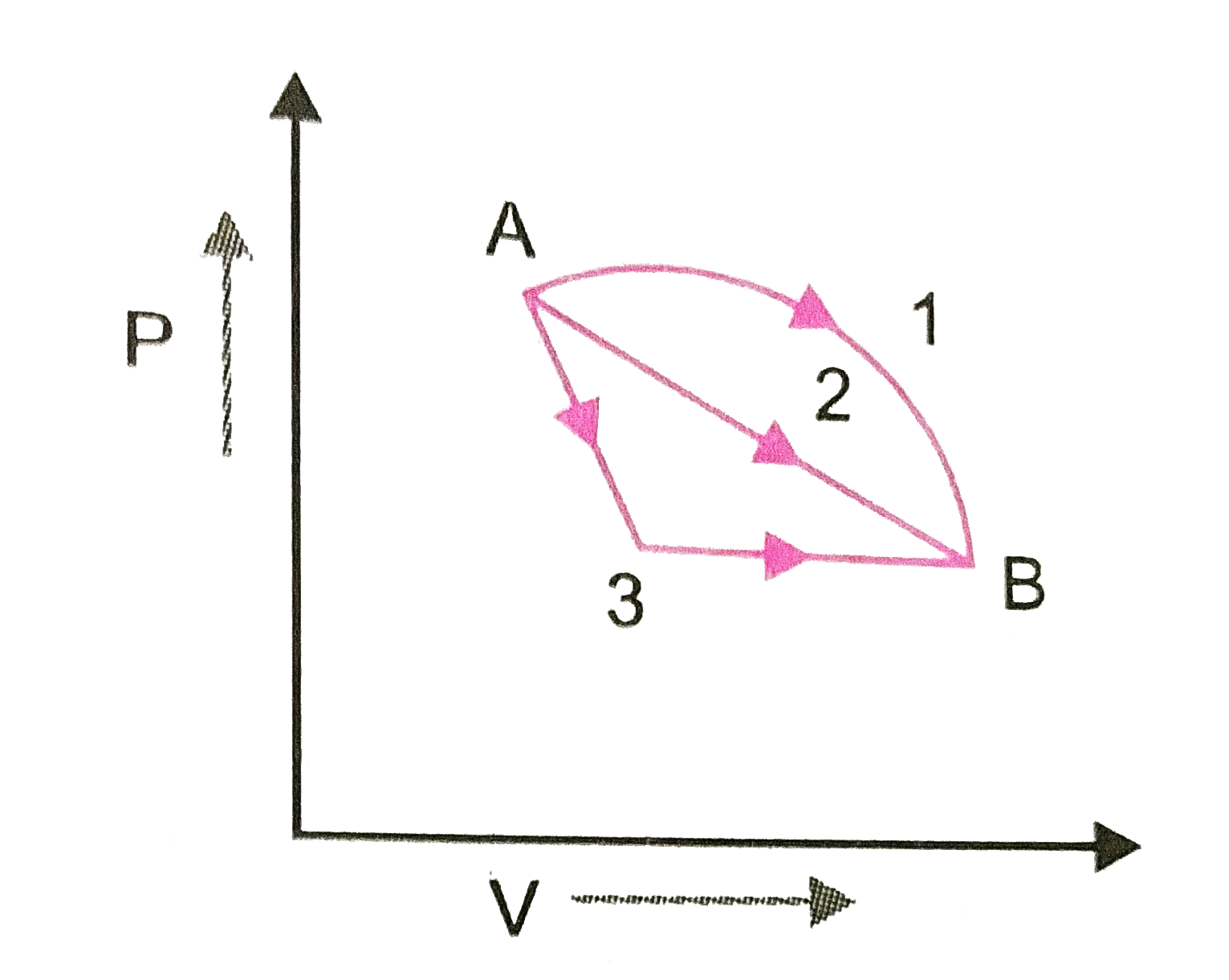
If Q2,Q3 indicates the heat absorbed by the gas along the three processes and ΔU1,ΔU2,ΔU3 indicates the change in internal energy along the three processes respectively, then
View Solution
Knowledge Check
A gas is expanded from volume V0 to 2V0 under three different processes, as shown in the figure. Process 1 is isobaric process, process 2 is isothermal and process 3 is adiabatic. Let ΔU1,ΔU2 and ΔU3 be the change in internal energy of the gas in these three processes. Then
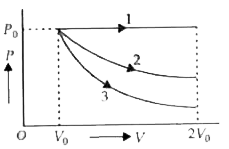 AΔU1>ΔU2>ΔU3BΔU1<ΔU2<ΔU3CΔU2<ΔU1<ΔU3DΔU2<ΔU3<ΔU1
AΔU1>ΔU2>ΔU3BΔU1<ΔU2<ΔU3CΔU2<ΔU1<ΔU3DΔU2<ΔU3<ΔU1A gas is expanded form volume V0→2V0 under three different processes as shown in the figure . Process 1 is isobaric process process 2 is isothermal and and process 3 is adiabatic .
Let ΔU1,ΔU2andΔU3 be the change in internal energy of the gs in these three processes then
 A△U1>△U2>△U3B△U1<△U3<△U2C△U2<△U3<△U3D△U2<△U3<△U1
A△U1>△U2>△U3B△U1<△U3<△U2C△U2<△U3<△U3D△U2<△U3<△U1Refer to let ΔU1 and ΔU2 be the changes in internal energy of the system in the processes A and B. then
AΔU1>ΔU2BΔU1=ΔU2CΔU1<ΔU2DΔU1≠ΔU2
An ideal gas expands from V to 2V in 4 separate processes. Where process 1 is isothermal process 2 is adiabatic, process 3 is free expansion and process 4 is isobaric. If E1,E2,E3 and E4 are the changes in average kinetic energy of the molecules in the isothermal, adiabatic free expansion and isobaric process respectively then choose the correct options.
View SolutionA system goes from A to B via two processes I and II as shown in the figure. If ΔU1 and ΔU2 are the changes in the internal energies in the processes I and II respectively, then -

View SolutionA system goes from A and B via two processes. I and II as shown in figure. If ΔU1andΔU2 are the changes in internal enregies in the processes I and II respectively, then
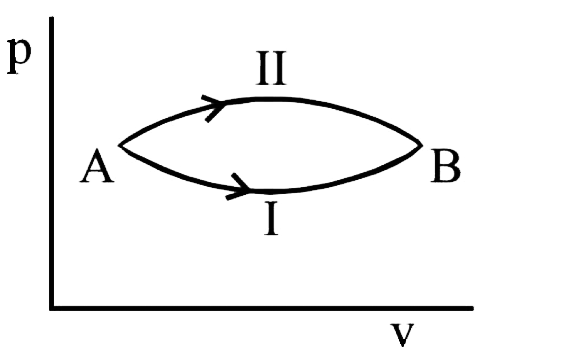
View SolutionRefer to let ΔU1 and ΔU2 be the changes in internal energy in the system in process A+B and ΔW be the net work done by the system in the process A+B,
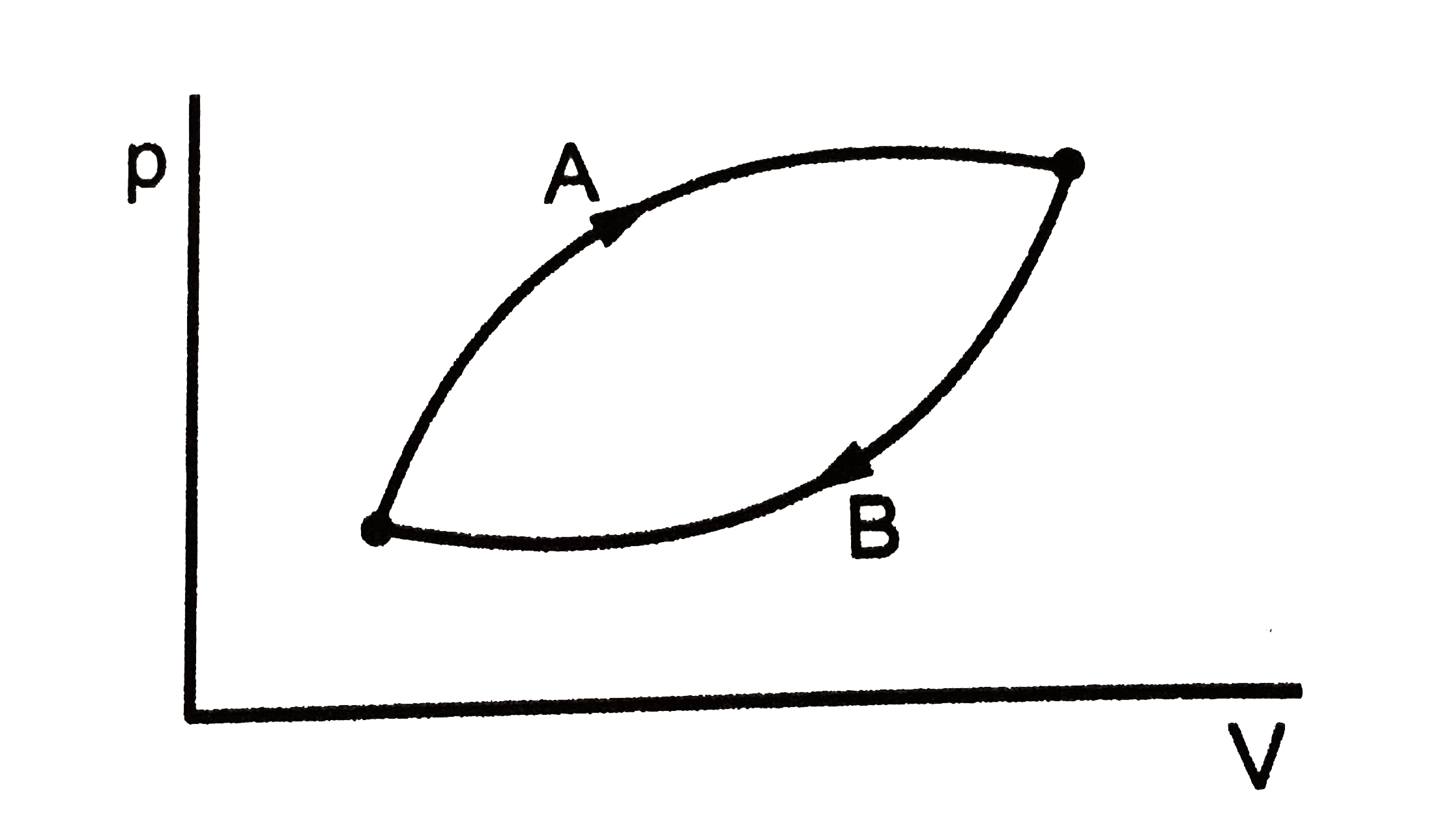
View SolutionAn ideal gas may expands from V0 to 2V0 according to following three processes. Molar specific heat for processes b will be

View Solution
